December 8, 2021
Wild Weather Ride!
If you’re into surprises, this holiday season sure doesn’t disappoint. We swing from hot chocolate weather to lemonade faster than we can layer up or layer down. Since we’ve dodged a freeze so far, warm weather annual Mexican sunflowers (Tithonia) vie for blazing autumnal admiration.
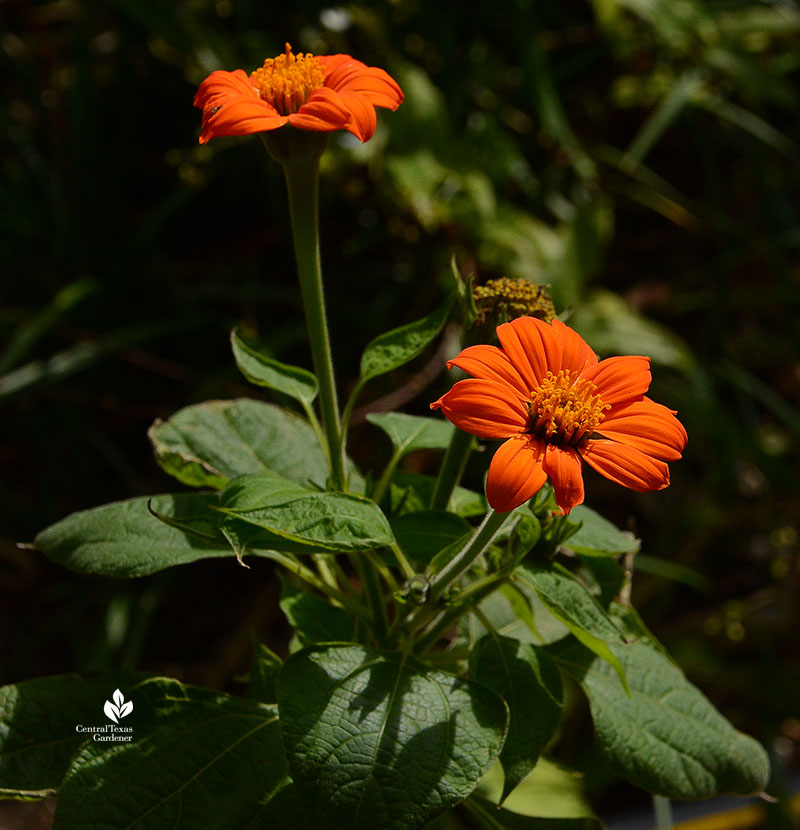
And then we’ve got summertime’s Pride of Barbados pumping out flowers just feet away from inflatable Santas.
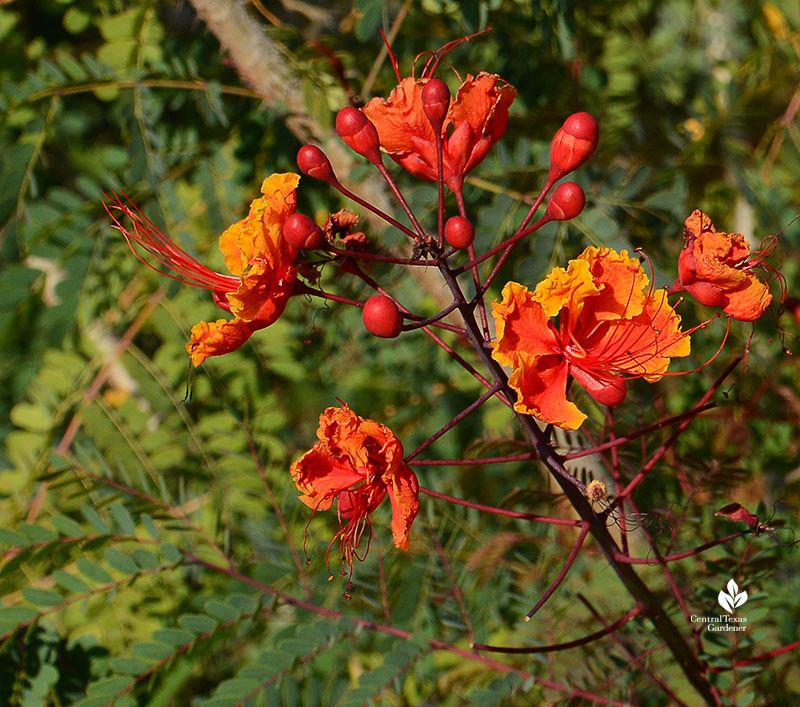
Autumn’s the usual time for velvety purple-spiked Mexican bush sage (Salvia leucantha) and golden Mexican mint marigold to put on a striking show in director Ed Fuentes’s front curb garden; a hit with every bee and butterfly on the block. These perennials may freeze back on top but will be back in spring. If they don’t freeze back, a good chop to the ground in late winter/early spring will develop more attractive plants next year.
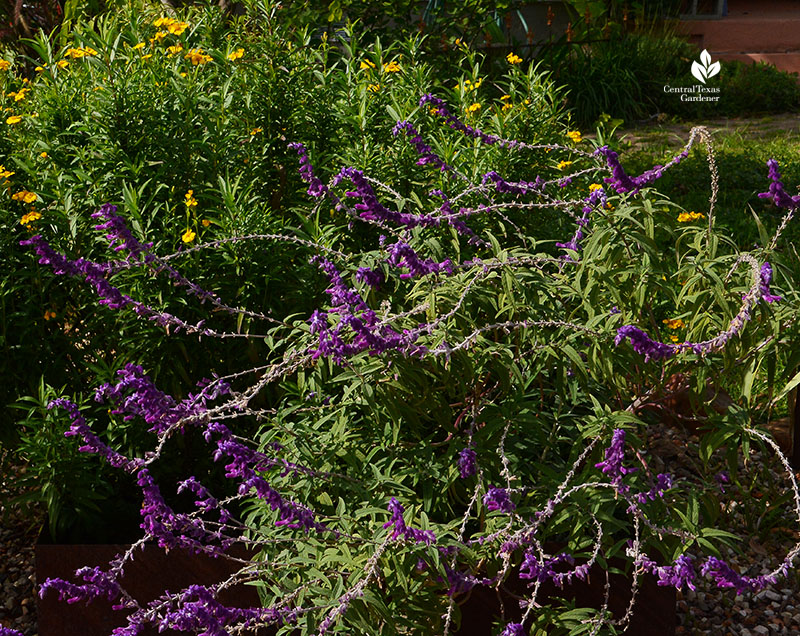
Since Mexican mint marigold is our tarragon substitute, trim it during spring and summer for recipes and to flavor vinegar. Trimming makes a bushier plant, too. If/when it freezes back, go ahead and grab those leaves, too.
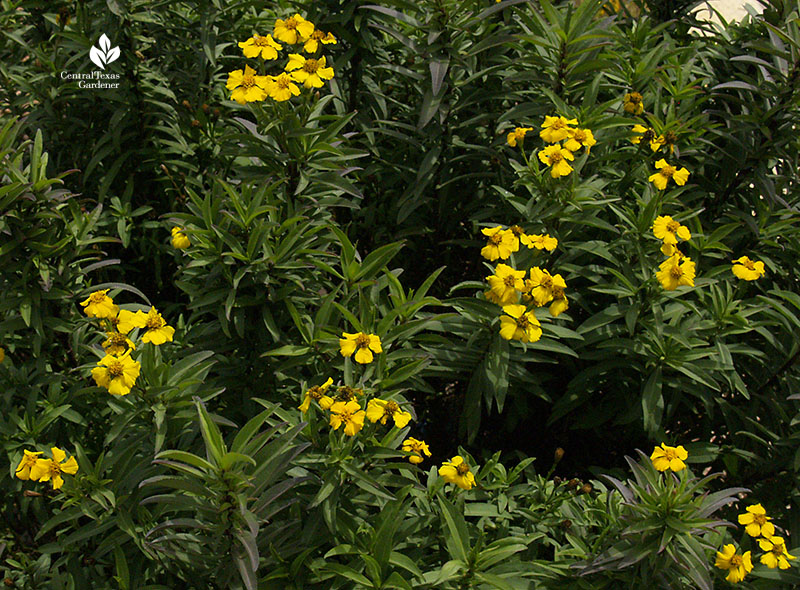
My native perennial skeleton-leaf goldeneye daisy (Viguiera stenoloba) took its sweet time to flower for its fall fan club pollinators. Although evergreen, prune it back in early spring for a denser shape.
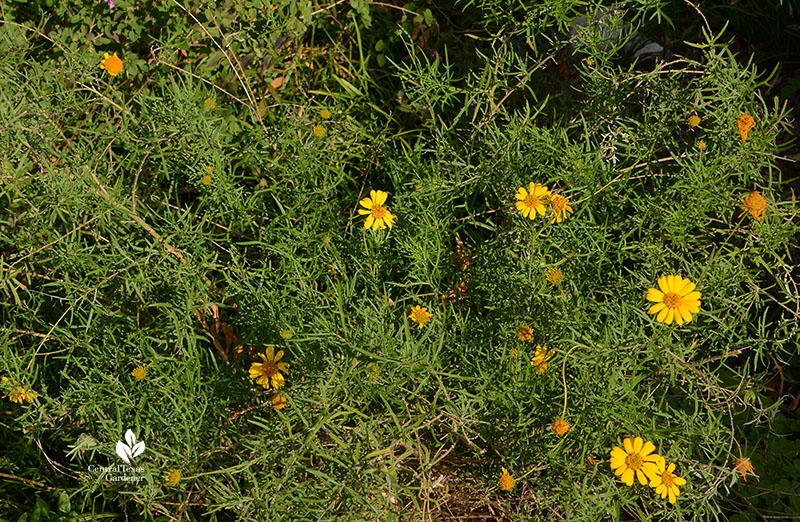
Plus, trimming in the growing season—which I neglected to do—prompts more flowering. In sun or part shade, it needs good drainage. By the way, this is a great time to plant hardy perennials like this one. I added a new one last weekend to establish it before sincerely hot weather.
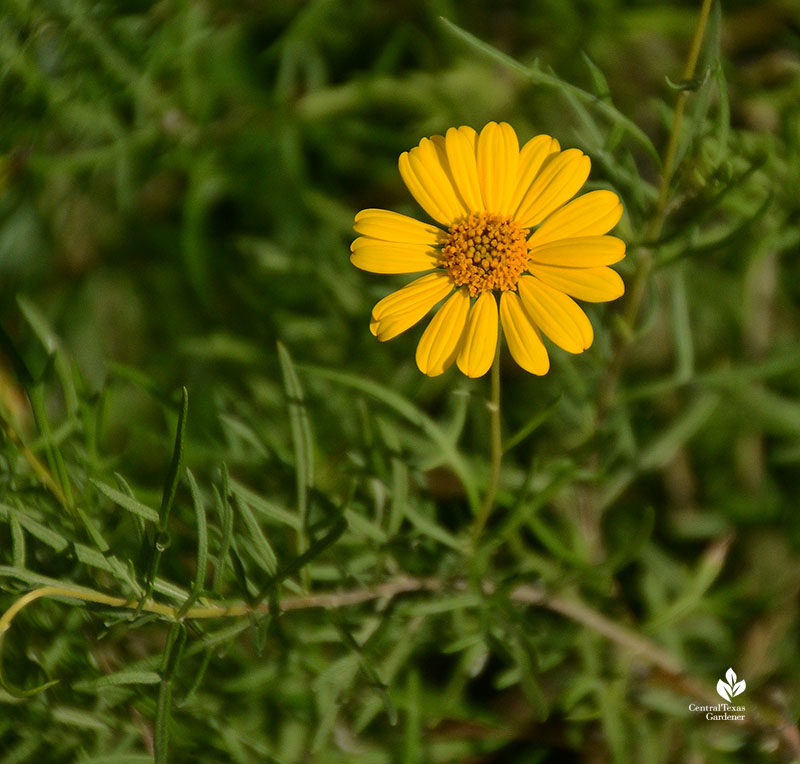
I did prune back my coneflowers to the rosettes in October, since they were really quite a mess. A little rain and our spring-like weather quickly revived them, enticing one to bloom even on its short stalk. And no, it’s not shy; just veiled by a peanut seedling planted by a squirrel.
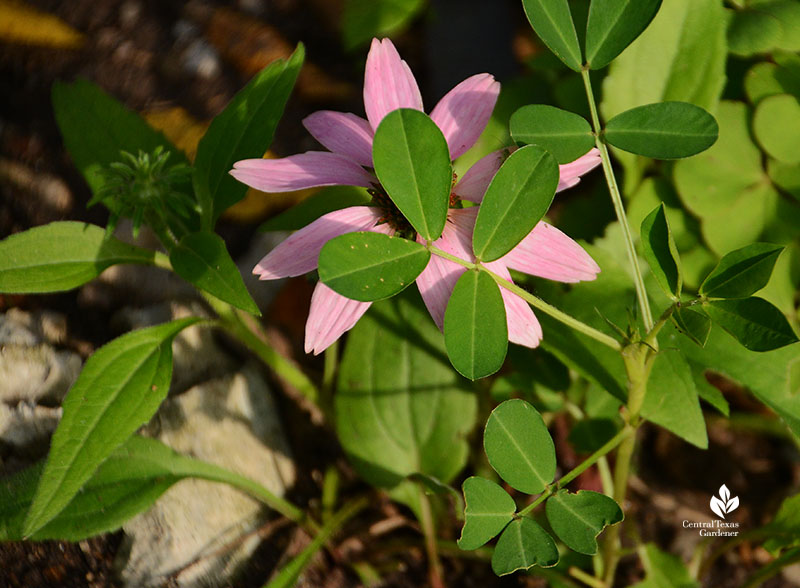
Early every morning, I scatter raw, unsalted, unshelled peanuts around the backyard for the squirrels. Blue jays figured this out pretty fast and keep an eye out for me. They holler the “peanut alert” to birds across the creek until they get an answer back. In seconds, it’s rush hour traffic—leaping squirrels racing from one tree to another, sailing jays, and hopping woodpeckers. The first cup of coffee couldn’t be more eye-opening.
In May, I planted peanuts in one bed as a warm weather nitrogen-fixing cover crop for cool weather lettuces (and to make my own peanuts for the critters). They didn’t do well—probably due to not enough water. Next year, I’ll enlist squirrel expertise.
One November long ago, I couldn’t resist this fall-blooming gomphrena (Gomphrena decumbens) that entices bees and butterflies from fall through winter, even after frost. I planted it under a mountain laurel where it gets sun off and on through the day. It’s made it through countless weather record-breakers.
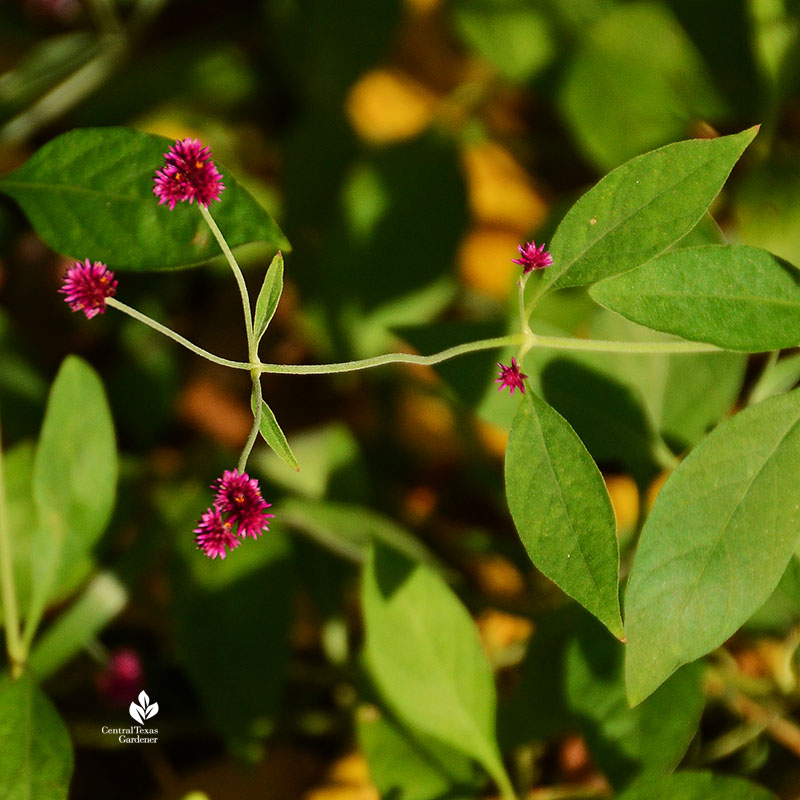
Then tagged as ‘Grapes’, it’s also called ‘Little Grapes’ and other names. Unlike our summertime annual globe amaranth gomphrenas, this sprawling perennial pops tiny burgundy buttons in rambunctious sprays. Prune back in early spring and trim throughout summer if you prefer a tidier look. Like its larger cousin, harvest the flowers for long-lasting wreaths and arrangements.
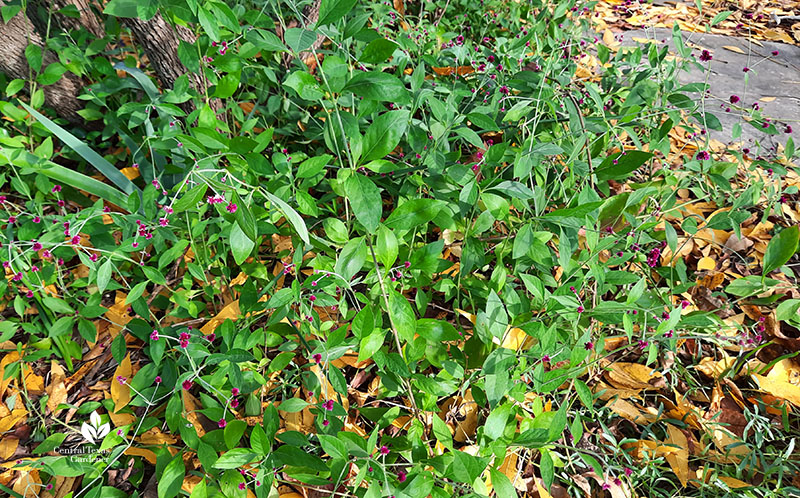
My thryallis, a shrubby subtropical native to Mexico and Central America, looked pretty gone after February’s freeze. Since its roots are very established in a warm microclimate at my house, I wasn’t that worried. I enlisted someone with a chainsaw to tackle its long-overgrown dead branches. Honestly, the freeze did me a favor! I’d neglected to give it that kind of dramatic chop for a few years. Now, it’s a well-shaped shrub to screen the air conditioner.
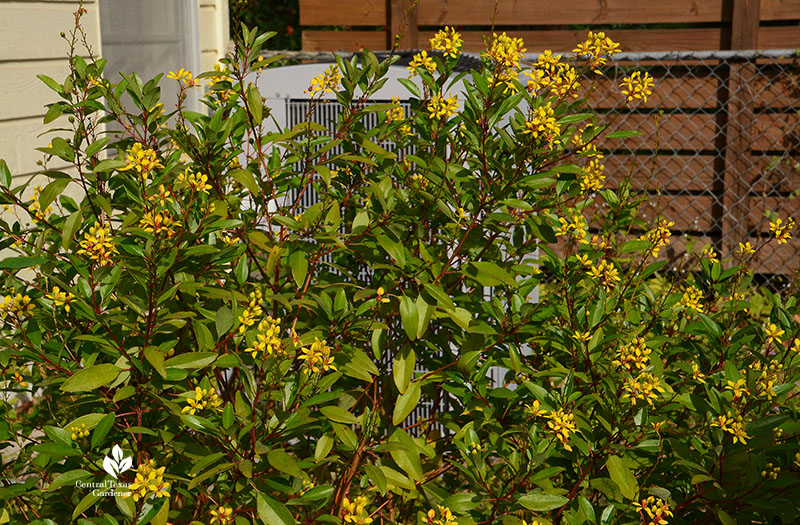
These multi-colored tiny peppers—possibly NuMex ‘Twilight’—continue lighting up their patio container. Once we get a serious freeze alert, I’ll protect them and harvest a few of the fiery, edible fruits for safekeeping or to cautiously add to recipes (they are hot!).
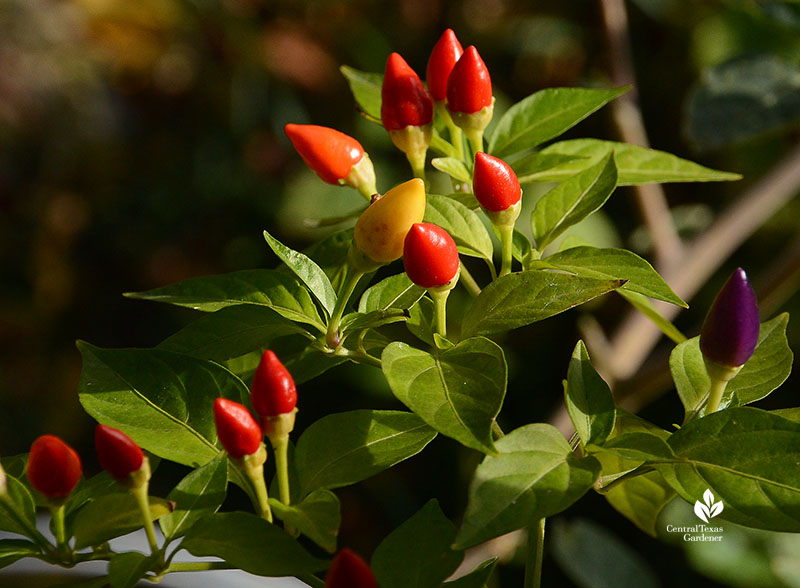
On a larger scale, ‘Big Momma’ turk’s cap, a Greg Grant hybrid of our native plant, extends the blooming season for butterflies and bees as the native turk’s caps head into dormancy.
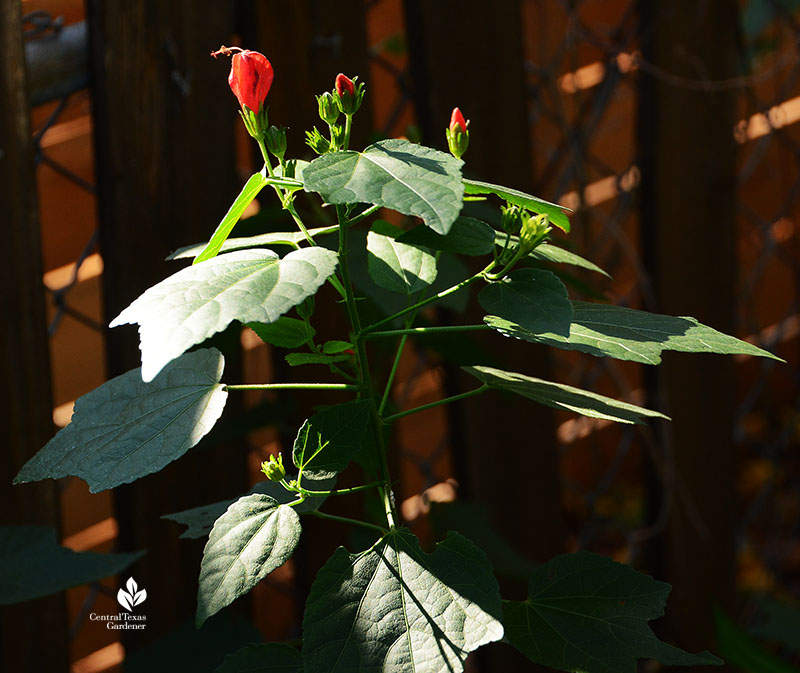
Since cool weather annual calendulas don’t mind our topsy-turvy temps, I recently planted a group to feed pollinators all winter. Glowing in morning and afternoon sunlight, we can add their fresh petals to our salads and garnishes.
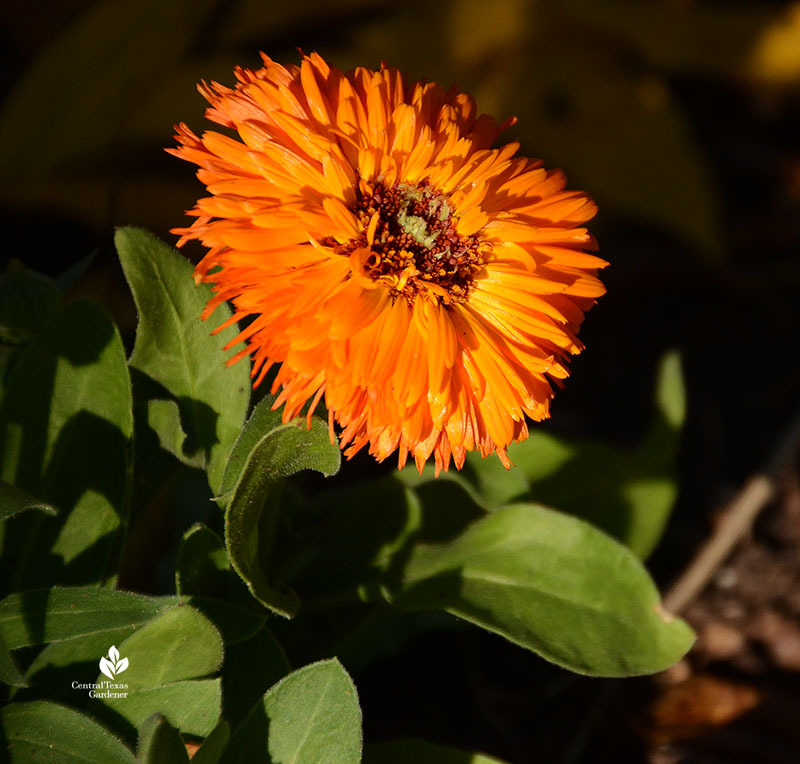
Dried petals make soothing teas and charming potpourris.
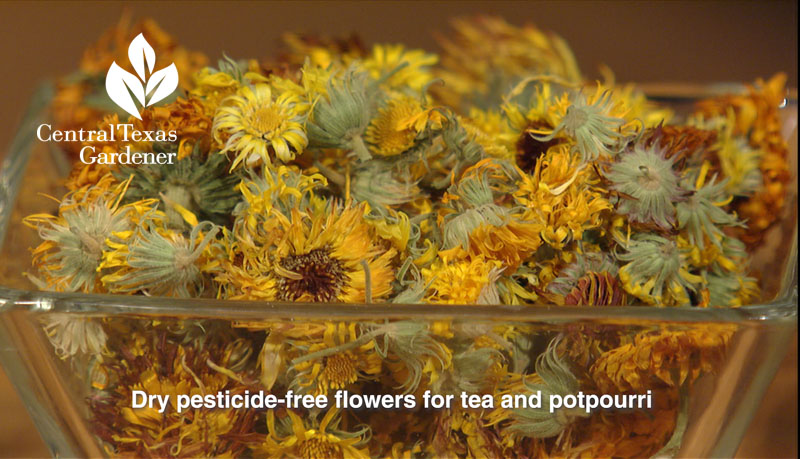
Perhaps you’ve seen calendula salve? Since calendula’s known for its antifungal and antibacterial benefits, I always have it handy as a natural topical for scrapes, burns, or other minor garden/household wounds.
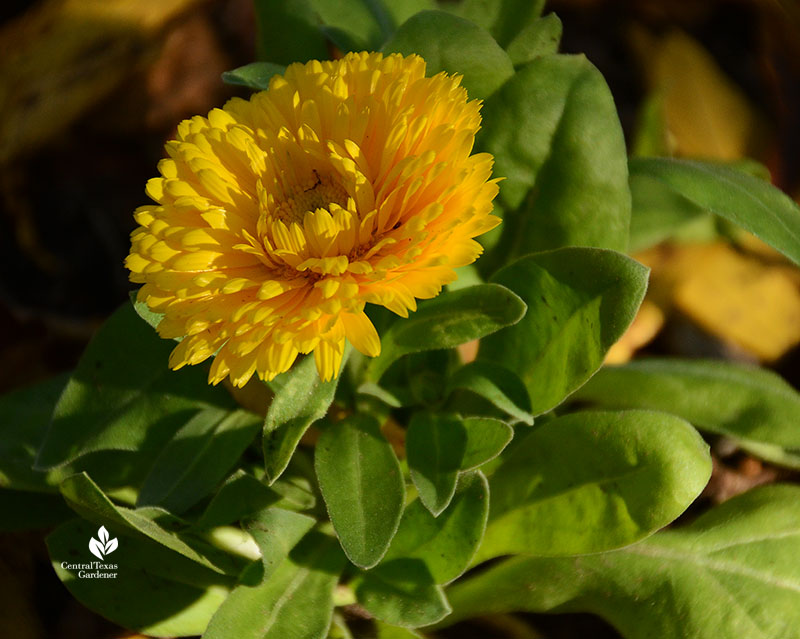
From CTG’s archives, Carla Crownover of Springdale Handmade gives us planting details and DIY tips for making our own salves and potpourri.
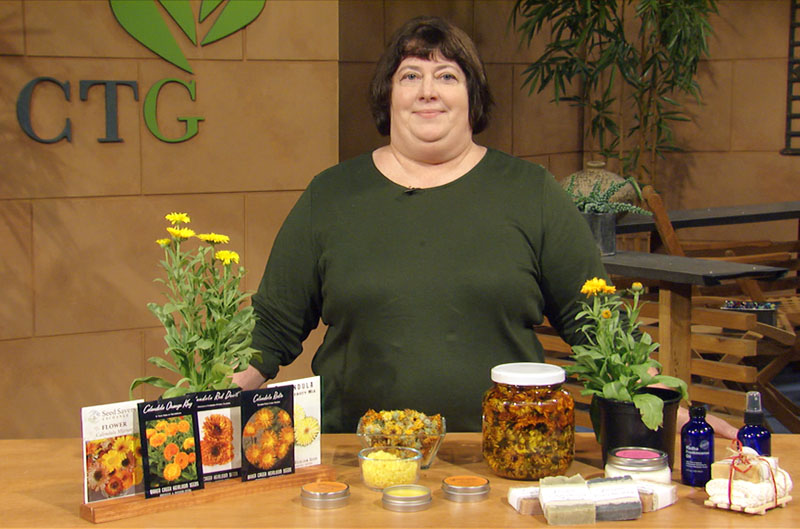
Watch now!
Thanks for stopping by! Linda
tags:

